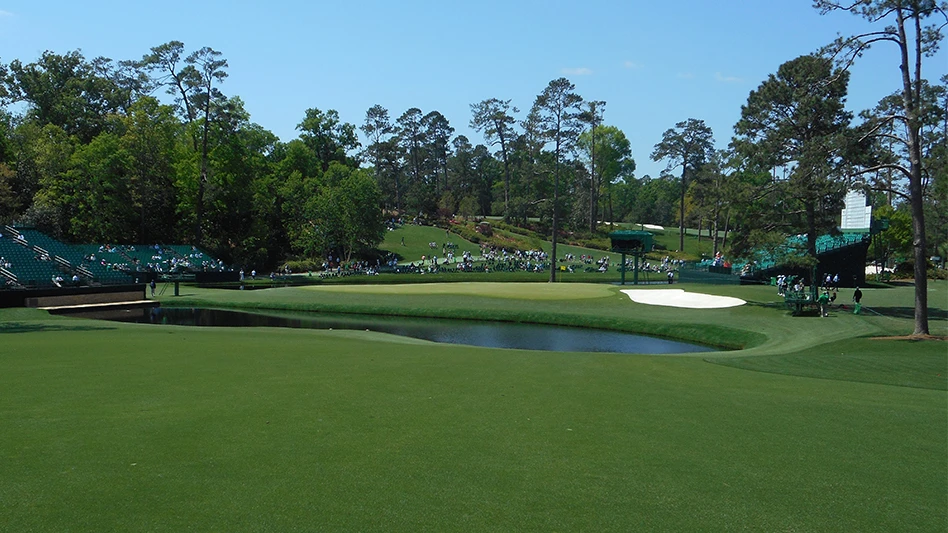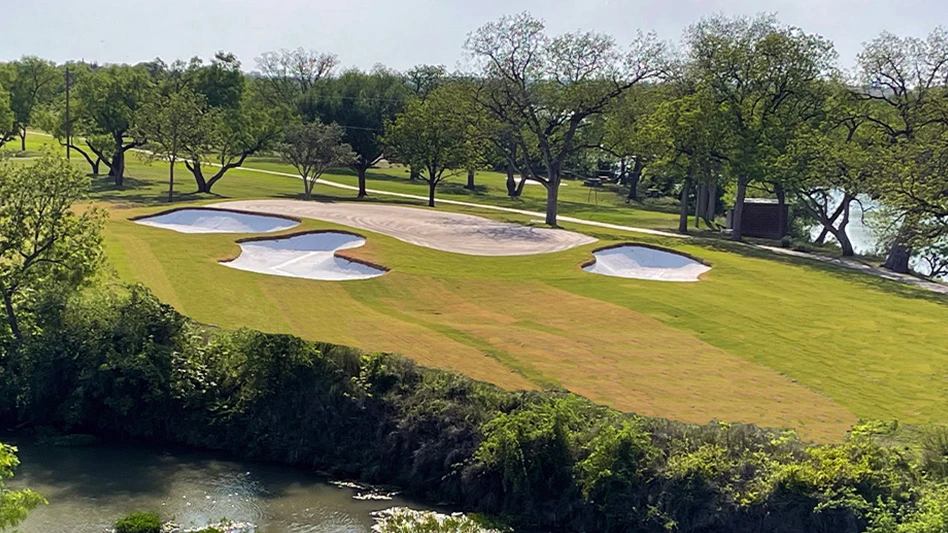Like open-heart surgery, replacing your irrigation system is invasive, done hopefully only once in a lifetime and best left to experts.
And like your heart, if not maintained regularly, it’s prone to breaking down.
“It’s not a glamorous topic for the membership,” says Paul Scenna, superintendent at Beacon Hall. “You bury it in the ground, you don’t see it and members don’t even want to see the water run. The whole objective is to hide it, but it’s the most important piece of equipment on the course.”
In the past, industry wisdom said a system would last approximately 20 years. Today, that’s not necessarily the case. “The truth is there are components of the system that a course has to be willing and ready to replace after three years up to about 40 years … a lot of golf courses get caught because they don’t have the budget for those three-year items,” says Tim Fredericks, a principal in the full-service irrigation consulting firm Fredericks McGuire.
A key to a successful irrigation project begins with understanding where this capital investment fits in the club’s long-range plan. Do research, hire experts, and don’t settle on either the highest or the lowest bid. Gary Taylor, golf irrigation manager, Turf Care, says having accurate records documenting system repairs (materials and labor) is valuable to convince a board/greens committee on the deterioration of the current system and the need for a new one. Have a plan in place to avoid getting caught without the money to finish the project or replace components at a later date.
“Financial planning is always the key,” he adds. “Whether money will be borrowed, members assessed or other avenues explored, a new irrigation system is a major purchase that will be in place for many years. Research should be carried out prior to making a decision. Too many people make a purchase based on price alone and then have to live with their decision.”
When deciding what type of system is needed, focus on water efficiency, not water use. While it may be unseen, it’s a key to maintaining the playing conditions members expect. It’s also one of the most expensive line items you will ever have to convince them to pay for. Most systems cost millions of dollars after adding parts and labor. Fredericks tells greenkeepers to treat irrigation as infrastructure. In the short term, this helps sell the system. In the long term, it ensures the system is built with quality materials and lasts longer.
Go through the entire planning process treating a new irrigation system as infrastructure – the same as would be done to build a new clubhouse or maintenance shop. Fredericks cites Beacon Hall as a project where he used this concept. Since it opened in 1988, the course, located in Aurora, Ontario – just north of Toronto – is regularly recognized among the top 10 courses in Canada. The 241-member equity club had not replaced its irrigation system since the grow-in when superintendent Scenna says corners were cut. He didn’t want the same thing to happen this time around, so he relied on Fredericks to help sell the return on this huge capital investment to his membership. Fredericks recalls pulling into the club’s driveway and noticing the road was ripped up outside Scenna’s shop where the city was installing new water mains. The consultant used this illustration to help members wrap their heads around the scale of the project and the need for the proposed irrigation system.
While some clubs can adapt their existing irrigation systems to a new one, due to a lack of pipe size, Beacon Hall had to install a brand-new system, which ended up costing the club more than $2 million.
“Members always ask: ‘Should we put in a Cadillac or a Chevy?’” Scenna comments. “I said, ‘We are going to put in a Volvo.’ The reason is because we never wanted to come back and do this again. We want to put in something that is quality and long-lasting and keeps the grass safe. In the end, it was a lot of money, but long term, it is going to apply the water the way we want.
“What drove the cost up was the size of the pipe and the amount of sprinklers,” Scenna adds. “We chose a lot of sprinklers because that is the only way to apply water more efficiently. How available is water going to be three years from now? We want to be able to control and water every part of our property. In the future, the club will be a lot better for it.”
What led Beacon Hall to install a new system (besides its age) was a lack of reliability of the current system and, more important, member demands. “They wanted to improve course conditions and to improve course conditions we needed to be more accurate applying our water,” Scenna says. “We had limited irrigation heads before, which would apply water inaccurately and the spacing of sprinklers was not appropriate – they were either too far apart or too close together.”
The club is located in the Oak Ridges Moraine – an environmentally-sensitive geological landform in south central Ontario, covering 190,000 hectares. The course gets its water from a well, but they wanted to make sure that if there are further limits on its water use in the future, they could handle any of these restrictions thanks to the sophistication of its system.
Scenna started the discussion with members at Beacon Hall back in 2006. After the members voted to go ahead with the project, they narrowed the selection to two manufacturers based on research and past experience. Fredericks drew up plans with sprinklers and piping using the products of both manufacturers, then contractors bid on the job. Once the contractor and manufacturer were picked, the new system was installed in phases in the fall of 2009 and spring of 2010, closing one hole at a time. Scenna was especially impressed with the way the contractor restored the course.
“Restoration is a huge part of the cost when it’s an established golf course,” Scenna says. “That’s what the members focus on.”
Rich Wagner, director of agronomy, at North Ranch Country Club, a 27-hole facility in Westlake Village, California, recently replaced his club’s 30-year-old irrigation system. The club hired an irrigation specialist and brought in a consultant. The club also relied on the expertise of their USGA regional representative to help sell the need for a new system, which they installed on all three of their 9-hole courses in 2007. They went from about 3,200 sprinkler heads to nearly 6,000. Even at almost double the heads, it does not equate to more water usage. Rather, the new system lets Wagner water more efficiently, saving up to 25 percent, which is critical, especially in the dry California climate. “Anytime you can do that is a good thing for the membership, the owners, and it’s also a good thing to share with the community,” he says.
Thomas Bastis, superintendent at the California Golf Club of San Francisco, equates choosing a new irrigation system to buying a computer. “Nobody goes out and buys the base model. You go out and say, ‘There is a chance I’ll need to use the Internet and at the same time I may want to use Photoshop, etc.’ So ask yourself, ‘What I can buy that I can grow into?’ and then buy something a bit above your level.”
Another crucial step when planning and designing an irrigation upgrade is to walk the course with the architect or consultant.
“Don’t rely on the irrigation designer to lay out your system,” Bastis says. “Walk the course with him. You are stuck with it. Eventually everybody is going to be gone and that first two years are probably going to be your hardest as a superintendent from the standpoint you are responsible for everybody’s hopes, dreams and wishes about what they thought or what they were sold on about this project.
“It’s like if somebody said, ‘we installed this brand new $2 million irrigation system, so why the hell are those guys out there on the fairways with hoses?’ You are the one that has to defend everything you do.” GCI
David McPherson is a freelance writer based in Toronto.

Explore the February 2011 Issue
Check out more from this issue and find your next story to read.
Latest from Golf Course Industry
- PBI-Gordon promotes Jeff Marvin
- USGA investing $1 million into Western Pennsylvania public golf
- KemperSports taps new strategy EVP
- Audubon International marks Earth Day in growth mode
- Editor’s notebook: Do your part
- Greens with Envy 66: A Southern spring road trip
- GCSAA’s Rounds 4 Research auction begins
- Quali-Pro hires new technical services manager





